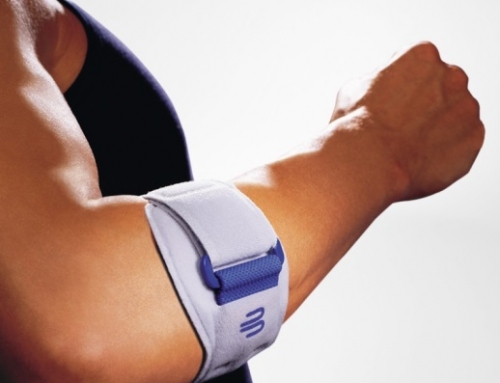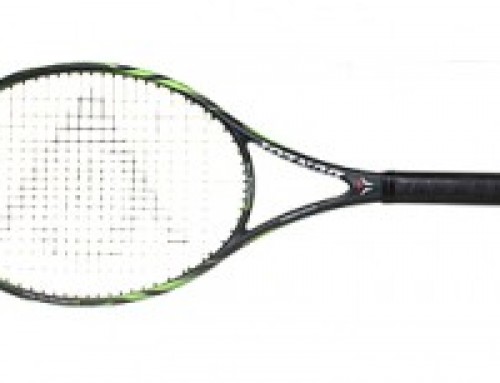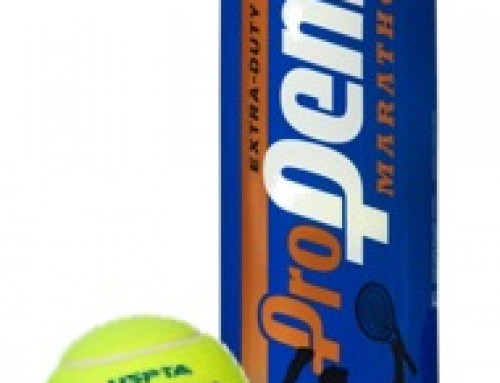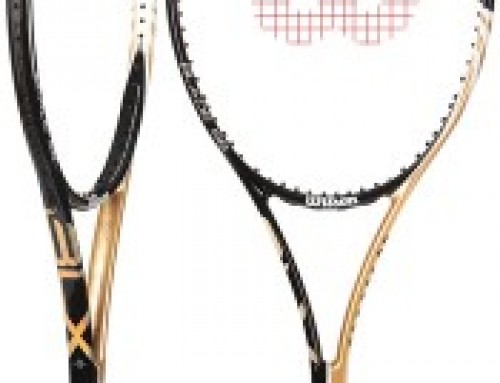
As a stringer, one of the most popular questions I get is, “What is this Luxilon string all about?” The first thing that I tell most people is that it is not for the majority of tennis players. There are two things that that keep the average player from using Luxilon, (and other Polyester mono-fibers) and those things are…
- Luxilon is a very stiff, uncomfortable string. Players with arm issues should steer clear.
- To use Luxilon to it’s fullest potential you should be taking a long, fast swing at the ball.
These things being said, if you do take a pretty good cut at the ball with a good amount of spin, Luxilon might be a good option for you.
As I mentioned above, Luxilon performs well for players who are not afraid to swing through the ball. The more racquet head acceleration that you can generate, the more spin you will be able to hit the ball. Spin gives you control, and Luxilon will allow for more rotations on the ball per shot, giving you more spin. The reason for this is two fold. The first is the fact that these strings do not move in your string bed. The ball is striking a stationary object, and that object is imparting the spin on the ball. The other reason is the stiffness of the string. There is very little elasticity so the ball brushes off the string bed rather than being catapulted off of it. Many polys are textured or shaped in a hexagon to bite the ball even more. Because these strings are “dead” strings, you can swing out on shots and from positions that several years ago were thought crazy. Many players and experts believe that the ability to do this, has been the biggest change in the modern pro game. As you can imagine, the playing characteristics of Luxilon benefit baseliners, but all court players and the two serve and vollyers left can also benefit from these strings by using them in hybrid set ups.
Hybrid stringing is not a new thing. For years string manufacturers have combined stiff, durable strings with softer strings. Prince Pro Blend, which uses Kevlar strings in the mains(up and down), and synthetic gut in the crosses (side to side), is probably the best known of these. To soften the harsh feel of Luxilon you can do the same thing. By putting Luxilon in the mains of your racquet you will still get the spin benefits (to a slightly lesser degree), but it won’t be quite as hard on your arm. This is the way that I like to introduce players to Luxilon if they want to try it. The other option that you have with a Luxilon hybrid is putting it in the crosses. This option is for players who like to use more touch in their games. Roger Federer has been using this hybrid for a few years, and thus it has become very popular. This set-up gives you a stiff string bed, but also gives you the feel that you need to execute those nasty drop shots. Some people have even found that durability increases by about 15% with the Luxilon in the crosses, rather than in the mains.
If you do choose to use a hybrid set-up with Luxilon, choose a soft more elastic string such as Wilson NXT or Babolat Xcel. For the ultimate hybrid, go for natural gut.
For those of you who want to try Luxilon in the mains and the crosses but are worried about the stiffness, there is an option. Last year Luxilon introduced ALU Power Fluoro, a softer thinner version of their best seller ALU Power. It is still stiff, but it has a little more give. Also Gamma makes a line of Zo strings that play very similar to Luxilon, but are a lot more forgiving on the arm.
So are Luxilon strings the strings for you? I hope that this information has helped you to make a more informed decision. Choosing the right string to fit your game is one of the biggest factors to helping you play your best.







